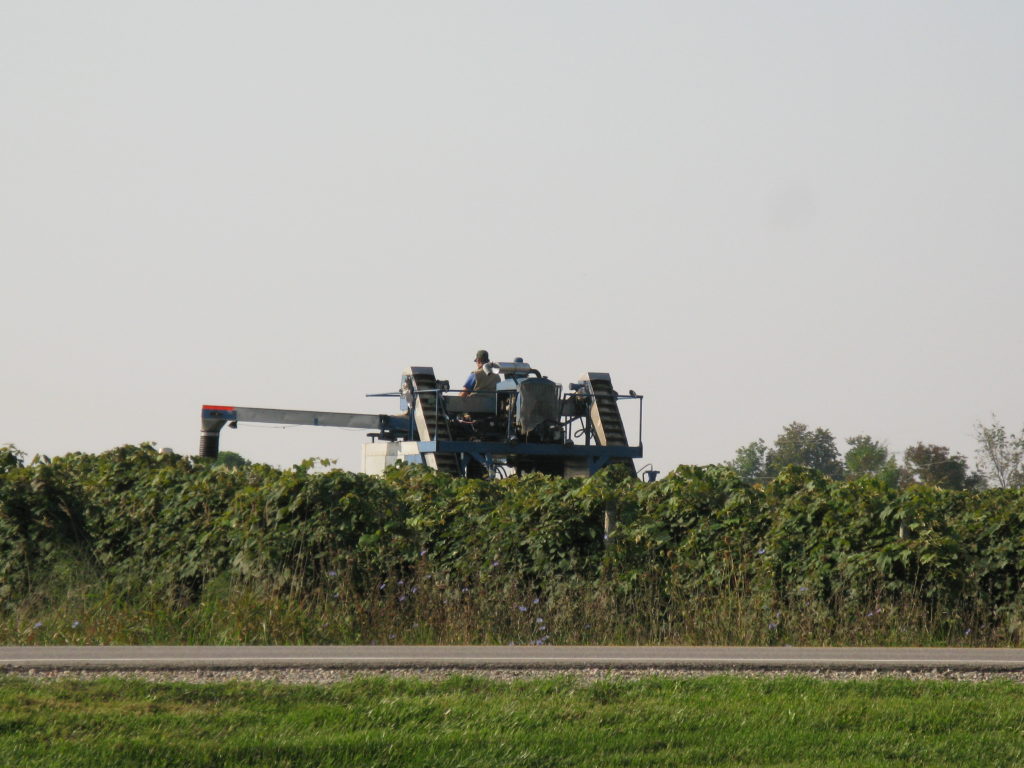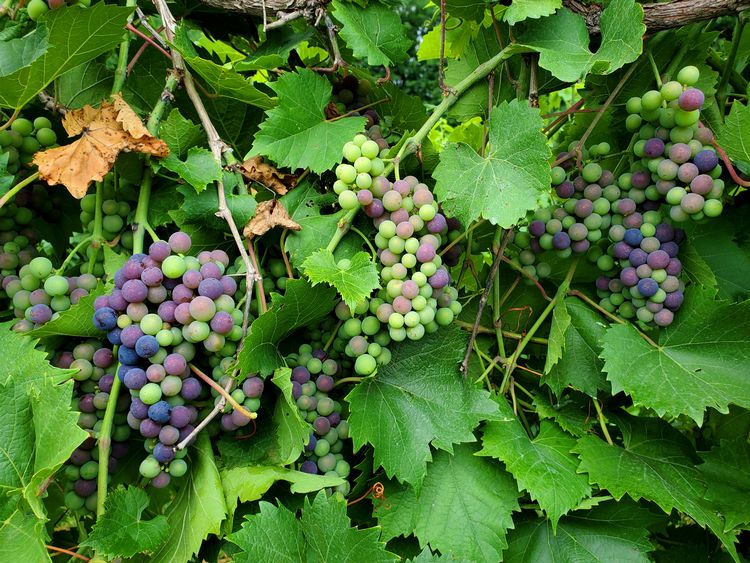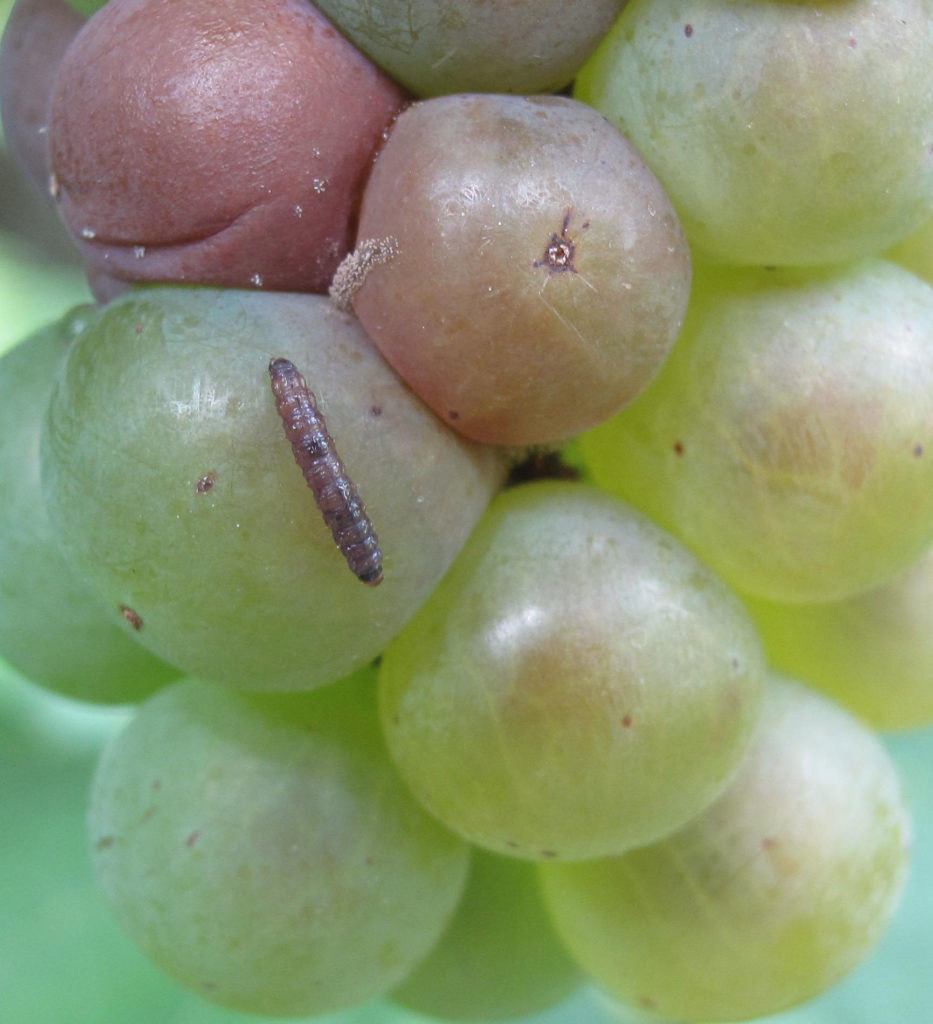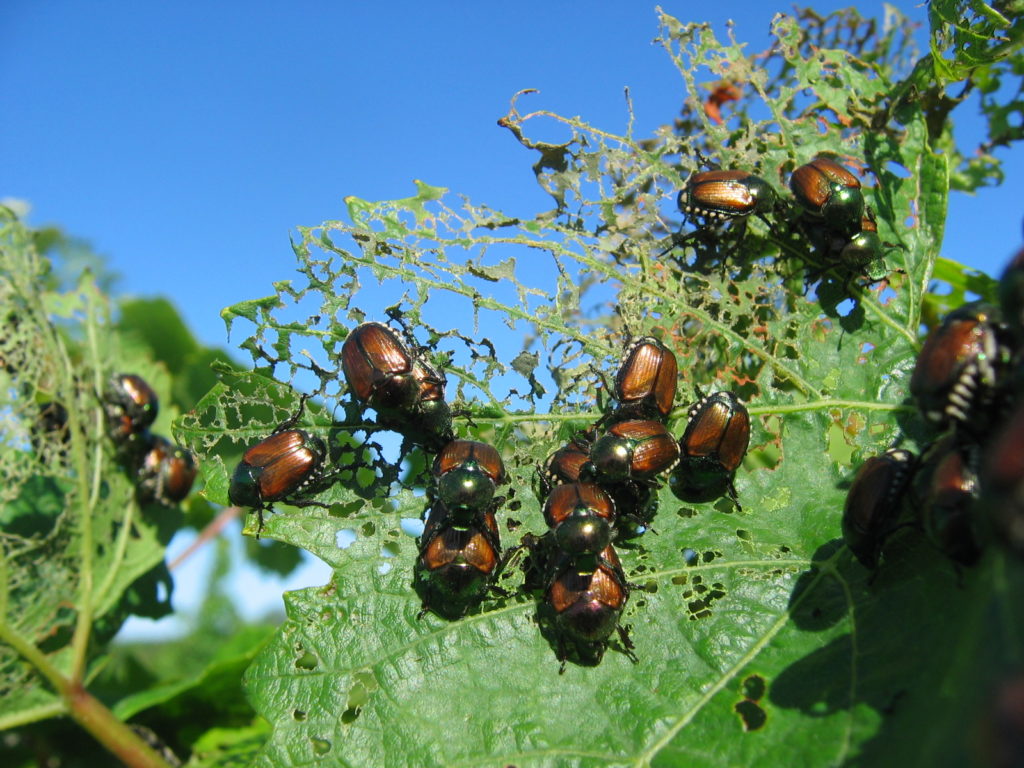U.S. grape growers gain the use of permethrin insecticide through IR-4-sponsored residual trials.

The United States is the world’s third largest producer of grapes behind China and Italy. The U.S. Department of Agriculture reports that utilized grape production totaled 6.8 million tons in 2019. Grapes were produced on an estimated 935,000 acres with an average yield of 7.4 tons per acre. Of the total utilized production, 998,900 tons were for fresh market and 5.79 million tons were for processing, including for production of grape juice. Grapes have the highest production volume of any fruit in the United States at over 7 million tons.
The National Grape Cooperative has more than 1,000 grower/owner-members who harvest Concord and Niagara grapes from about 50,000 acres of vineyards. Even with the production by U.S. growers, the domestic grape juice industry depends on imported grapes, including grapes grown in Canada. One of the obstacles the U.S. grape industry faced with importing Canadian grapes was Canadian growers could legally use the insecticide permethrin, which did not have a tolerance in the United States.
“Because the U.S. lacked a tolerance for permethrin on grapes, this significantly hampered trade and impacted this important specialty crop industry,” said John Wise, professor of entomology at Michigan State University and director of the IR-4 Project North Central Region.

Wise worked with Rich Erdle at the National Grape Cooperative to attain an “A” priority for the IR-4 Project to conduct residue trials which led to a U.S. tolerance for permethrin.
“The American grape juice industry represents 75,000 acres of domestic production,” said Anthony VanWoerkom, IR-4 regional field coordinator and academic specialist of entomology at Michigan State University. “Even with domestic production, juice processing plants in the U.S. depend on grapes from Canada. Because Canadian grape growers use permethrin, it was important for the U.S. to have the same tolerance for the insecticide on juice grapes.
VanWoerkom was involved in IR-4 residue trials with permethrin on Concord grapes, which assisted in gaining a U.S. tolerance for the insecticide.
“The residue trials conducted at Michigan State along with trials by other IR-4 field researchers were instrumental in EPA registering permethrin for use on grapes,” he said. “The residue studies for IR-4 were very extensive. These were good laboratory practice (GLP) studies that included large sample sizes. The trials were performed at universities that have research farms and extension centers like Michigan State.”

Increasing need for additional controls
Permethrin is classified as a Group 3 insecticide, which are sodium channel inhibitors/modulators.
“Permethrin is an insecticide with a unique mode of action,” said VanWoerkom. “This compound does not degrade as quickly as other Group 3 pyrethroids so it has a lower UV-degradation rate. A lot of pyrethroids have a very high degradation rate in the sun from UV. This is important because growers can apply permethrin and it will last longer than other Group 3 insecticides.”
Another reason it was important to gain a U.S. tolerance for permethrin is the increasing number of invasive pests entering the United States.
“There are a number of insecticides registered for use on grapes, but with new invasive species coming into the country, we want to keep the number of insecticides labeled for use high,” said VanWoerkom. “New invasive species including the brown marmorated stink bug, spotted wing drosophila, and spotted lanternfly are a threat to small vine climbing fruit crops. It is important that growers have access to as many classes of insecticides as possible to keep the diversity high in order to prevent resistance.”
“There are also some grape pests that continue to be a problem because of the development of resistance. These pests include the grape leaf hopper, grape berry moth, and multicolored Asian lady beetle. These are three major pests on grapes.”
Even with the number of insecticides registered for use on grapes, VanWoerkom said growers are facing stricter restrictions on chemical residues.
“Because of stricter residue restrictions growers can’t spray as close to harvest as they used to,” he said. “Also, with increasing international shipments of grapes to Europe, the pesticide residue levels have been reduced even more. This can make it difficult for growers to keep residue levels low while maintaining pest control even though they have numerous insecticide options.”

Limiting pest damage, resistance
VanWoerkom said permethrin can be rotated with other commercial insecticides in other classes including neonicotinoids and spinosyns.
“There is interest in biopesticides, but right now with grapes not so much,” he said. “There is a very low tolerance for insect damage on grapes. Growers are using more conventional insect control products. There are more biopesticides becoming available and they are being used more in rotation with conventional control products. Smaller farms may have an opportunity to use some of the biopesticides, but larger farms are using more conventional products.
“With proper IPM and class rotation of chemicals growers should be able to hold resistance to a minimum. This is why the number of chemical classes is so important.”
VanWoerkom said grape growers are using degree day models to determine when pests are going to show up on their crops.
“There are degree day models for all insect pests on grapes like with other fruit pests,” he said. “Growers generally have degree day models based on their location. In Michigan, a base temperature of 50ºF is used for degree day models to predict when insects will arrive. It’s accurate almost to the week as to when insects will show up. I have been working with grape growers for 13 years and we have developed pest graphs called trap lines that we maintain based on the insects we trap. The insects show up at the same time and have the same emergence pattern.
“Growers are the best real-world entomologists and they know when the insects are going to show up. They know what the pests look like and how to control them.”
For more:
Anthony VanWoerkom, Michigan State University, MSU Trevor Nichols Research Center, Fennville, MI 49408; vanwoer3@msu.edu
John Wise, Michigan State University, Center for Integrated Plant Systems, East Lansing, MI 48824; wisejohn@msu.edu
PR# 01953 Grape (Grape Berry Moth)
David Kuack is a freelance technical writer in Fort Worth, Texas; dkuack@gmail.com.
